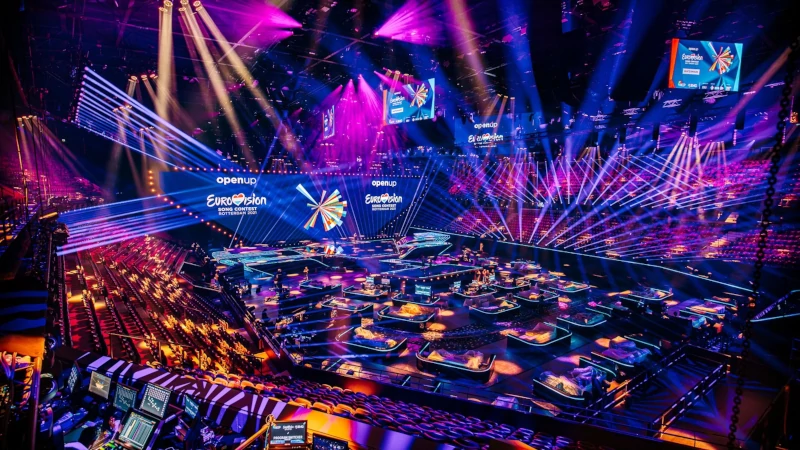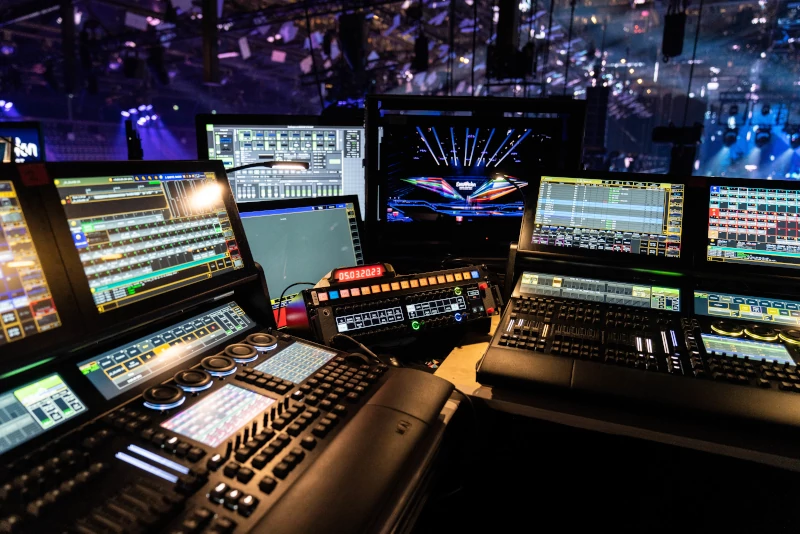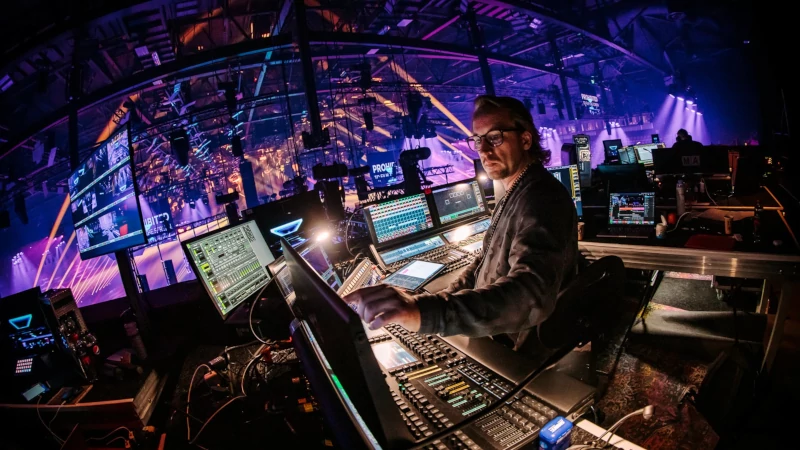Eurovision Song Contest, Netherlands
With about 550 rigging points, 215 tons of sound and video gear, and (mind you) 1,800 luminaires and huge lengths of flexible LED, ESC was a true monster job.
Eurovision Song Contest 2021, held in Rotterdam Ahoy, is past. The show rocked, thanks to LD Henk Jan van Beek, his Light-H-Art team and 9 lighting professionals. Together they took care of lighting design, programming and operating during the shows. Let's have a chat with some of them and dive deeper into the use of timecode in this ESC edition, managed by Head of Production Erwin Rintjema, on behalf of NPO/NOS/AVROTROS TV networks and European Broadcasting Union, EBU.
Micky Dordregter and André Beekmans. Skilled lighting operators and designers of signature events and tours. What was it like to work on this huge production?
"Well, what shall I say?" André says. "It's an honour for sure. It was not on my bucket list, yet now I can take it off!" "It was great to work on such a massive show", Micky continues. "Especially the live audience after such a long time thrilled us".
Let's not discuss the huge amount of equipement used here, yet focus instead on Visual Productions' TimeCore. 6 TimeCores were supplied by Full AVL Distribution to Ampco Flashlight, which again this year supplied all lighting, sound and rigging to ESC. Can you tell us more about how the TimeCores were utilised?
Micky: “During rehearsals in the Ziggo Dome we used 5 different lighting consoles. Each operator had one TimeCore and the audio tracks were played from REAPER, a software player for audio and video. Timecode events are logged here as well. MIDI timecode from REAPER was output as RTP and fed into TimeCore, which converted this into LTC (SMPTE timecode). This LTC signal was fed into a GrandMA3 console, a perfect way of syncing each show to timecode. Each track had its own time with a 30 minutes offset: country 1 at 1:00, country 2 at 1:30 etc., This way every track had a unique timecode, besides, timecode changes weren't necessary. Master timecode during the shows was a SMPTE signal coming from the audio tracks. This SMPTE master signal was distributed among OB trucks, motion, video, lighting, special FX, etc. through a Riedel Mediornet network. The SMPTE timecode was then fed into the TimeCore, converted and routed as LTC to GrandMA3 consoles: always accurate timecode with the correct frame rate.
André: ”During the live shows in Ahoy we worked with 3 individual GrandMA3 'sessions', together controlling the full set: lighting, stage, media servers and LED lines. Each 'session' included 3 GrandMA3 Lite consoles: Main, Backup1 en Backup2. Main and Backup1 both had a TimeCore positioned between incoming SMPTE time code and console.”
Micky adds:
”We selected TimeCore's Freewheel function, a setting that automatically continues timecode output if the source would fail: timecode will continue in case of SMPTE distribution problems. It's an additional way to prevent from show interruptions.
“With shows like ESC, timecode is of paramount importance. The whole show depends on it. As all camera shots are preprogrammed, cues are fired at high speed and timing is crucial. Smaller song setups contain about 50 cues with audio and video settings and camera shots being exactly identical. Bigger song setups require 300 to even 500 cues. Impossible without master time code", concludes André.
Roy Aarninkhof, Ampco Flashlight sr. lighting systems tech, adds:
"TimeCore is reliable and performed very well. With its simple user interface and truckload of functions, it is a valuable tool. Just like the other Visual Productions gear we have at our disposal here at Ampco Flashlight.”
Project: Eurovision Song Contest
Contractor: Ampco Flashlight
Lighting Designer: Henk Jan van Bee
Location: Ahoy Rotterdam
Year: 2021



